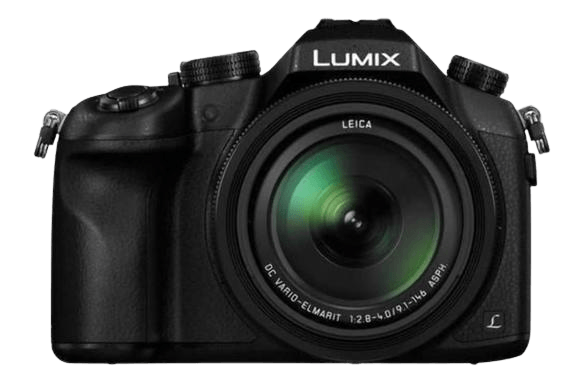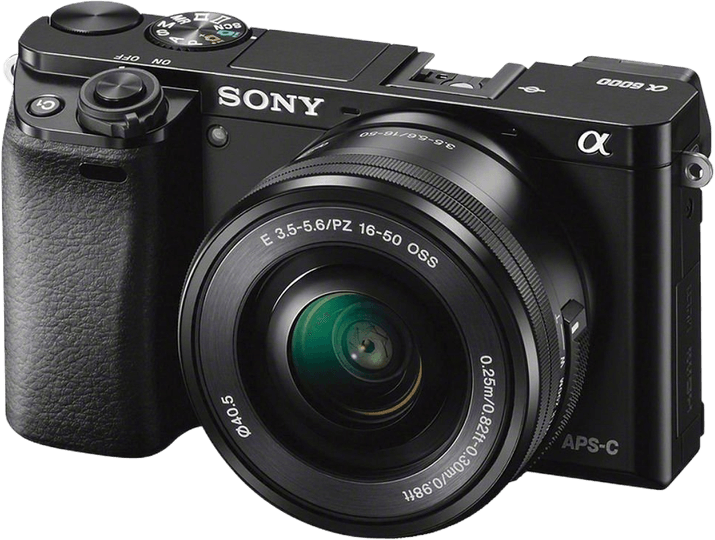Panasonic Lumix DMC-FZ1000 vs Sony a6000 Comparison
Panasonic Lumix DMC-FZ1000

Sony a6000

The Panasonic Lumix DMC-FZ1000 and Sony a6000 both scored 57/100 in our comparison, showcasing their similarities. They were released in 2014, with the FZ1000 priced at $899 and the a6000 at $799. Both cameras share common specifications, such as their release year and scores.
The FZ1000, a bridge camera, measures 137 x 99 x 131mm and weighs 831g (1.83lbs). It may be better for those who prefer a larger camera with more heft. On the other hand, the a6000, a mirrorless camera, measures 120 x 67 x 45mm and weighs 344g (0.76lbs). Its smaller size and lighter weight make it more portable and convenient for on-the-go photography.
Taking all factors into account, the choice between these two cameras depends on personal preferences for size and weight. The FZ1000 suits individuals who prefer a larger camera, while the a6000 caters to those who value portability and convenience.
Panasonic Lumix DMC-FZ1000 vs Sony a6000 Overview and Optics
The Sony a6000 wins the optics comparison with a score of 67/100, while the Panasonic Lumix DMC-FZ1000 scores 61/100. Both cameras share similar specifications, such as CMOS sensors, comparable shooting speeds (12 for the FZ1000 and 11 for the a6000), and advanced processors (Venus Engine for the FZ1000 and Bionz X for the a6000).
The Sony a6000 outperforms the FZ1000 in several areas. It has a higher megapixel count at 24.3, compared to the FZ1000’s 20, which allows for greater image detail. The a6000 also has a superior DXOMARK sensor score of 82, while the FZ1000 scores 64. Additionally, the a6000 features a larger APS-C sensor size and a Sony E lens mount, providing more options for lens interchangeability.
On the other hand, the Panasonic Lumix DMC-FZ1000 has a few advantages over the Sony a6000. It has a slightly faster shooting speed of 12 compared to the a6000’s 11, which can be beneficial for capturing fast-moving subjects. The FZ1000 also has image stabilization, while the a6000 does not. This feature helps to reduce camera shake and blur in images. However, the FZ1000 uses a fixed lens mount, limiting its versatility compared to the a6000.
Taking all factors into account, the Sony a6000 is the superior camera in terms of optics, with a higher score, greater image detail, and more lens options. The Panasonic Lumix DMC-FZ1000, while offering image stabilization and a slightly faster shooting speed, falls short due to its lower score and fixed lens mount.
Panasonic Lumix DMC-FZ1000 vs Sony a6000 Video Performance
The Panasonic Lumix DMC-FZ1000 outperforms the Sony a6000 in video capabilities with a significant 27-point difference in video scores: 83/100 for the FZ1000 and 56/100 for the a6000. Both cameras share some common specifications, including a maximum video frame rate of 60fps. However, the similarities end there, as the FZ1000 has several advantages over the a6000 in terms of video recording.
One major advantage of the FZ1000 is its 4K video resolution, which offers four times the detail of the a6000’s Full HD resolution. With a maximum video dimension of 3840 x 2160, the FZ1000 captures crisp, high-quality footage that is ideal for professional use or cinematic presentations. Additionally, the FZ1000 includes built-in time-lapse functionality, allowing users to create stunning time-lapse videos without the need for external accessories or software.
The Sony a6000, on the other hand, has a maximum video resolution of Full HD (1920 x 1080), which is suitable for casual users or those who do not require ultra-high-definition footage. While the a6000 does not have built-in time-lapse functionality, users can still create time-lapse videos with the help of external accessories or software, though this may be less convenient than the FZ1000’s integrated feature.
Considering these factors, the Panasonic Lumix DMC-FZ1000 is the superior choice for users who prioritize video capabilities in their camera. Its 4K video resolution and built-in time-lapse functionality provide a significant advantage over the Sony a6000. Meanwhile, the a6000 may be more suitable for casual users who do not require such advanced video features or those who are willing to invest in additional accessories for time-lapse creation.
Panasonic Lumix DMC-FZ1000 vs Sony a6000 Features and Benefits
The Panasonic Lumix DMC-FZ1000 triumphs over the Sony a6000 with a feature score of 58/100, compared to the Sony a6000’s score of 41/100. Both cameras share several specifications, such as a 3-inch screen size, flip screen, no GPS, and WIFI capabilities. However, the Lumix DMC-FZ1000 outperforms the Sony a6000 in certain aspects, while the latter has some advantages as well.
The Lumix DMC-FZ1000’s screen resolution is 2,359,000 dots, which is significantly higher than the Sony a6000’s 921,600 dots. This means the FZ1000 provides a sharper and clearer display for better image preview and menu navigation. Additionally, the FZ1000 includes Bluetooth connectivity, a feature absent in the Sony a6000. Bluetooth allows for easier and faster file transfers, remote control functionality, and connecting to accessories.
On the other hand, the Sony a6000 does not have any specific advantages over the Panasonic Lumix DMC-FZ1000 in terms of features. Both cameras lack a touchscreen and GPS, and their flip screens, WIFI capabilities, and 3-inch screen sizes are identical.
To conclude, the Panasonic Lumix DMC-FZ1000 is the superior camera in terms of features, with a higher feature score, better screen resolution, and the addition of Bluetooth connectivity. The Sony a6000 does not offer any distinct advantages in this area, making the FZ1000 the more appealing option for those seeking a camera with advanced features.
Panasonic Lumix DMC-FZ1000 vs Sony a6000 Storage and Battery
The Panasonic Lumix DMC-FZ1000 and the Sony a6000 both score 21/100 in storage and battery, showing equal performance in this aspect. They share common specifications, including one memory card slot each, accepting SD, SDHC, and SDXC cards. Both cameras have a battery life of 360 shots, with the FZ1000 using a DMW-BLC12PP battery and the a6000 using an NP-FW50 battery. Neither camera offers USB charging.
The FZ1000 does not have any advantages over the a6000 in storage and battery, as they share the same specs. However, the a6000 has a slight edge, as it also accepts Memory Stick Pro Duo and Pro-HG Duo cards, providing more flexibility in storage options.
Despite the a6000’s extra storage compatibility, both cameras perform equally well in terms of battery life and storage capacity. This aspect does not significantly differentiate the two cameras, and potential buyers should consider other factors when choosing between the Panasonic Lumix DMC-FZ1000 and the Sony a6000.
Panasonic Lumix DMC-FZ1000 vs Sony a6000 – Our Verdict
Are you still undecided about which camera is right for you? Have a look at these popular comparisons that feature the Panasonic Lumix DMC-FZ1000 or the Sony a6000:

